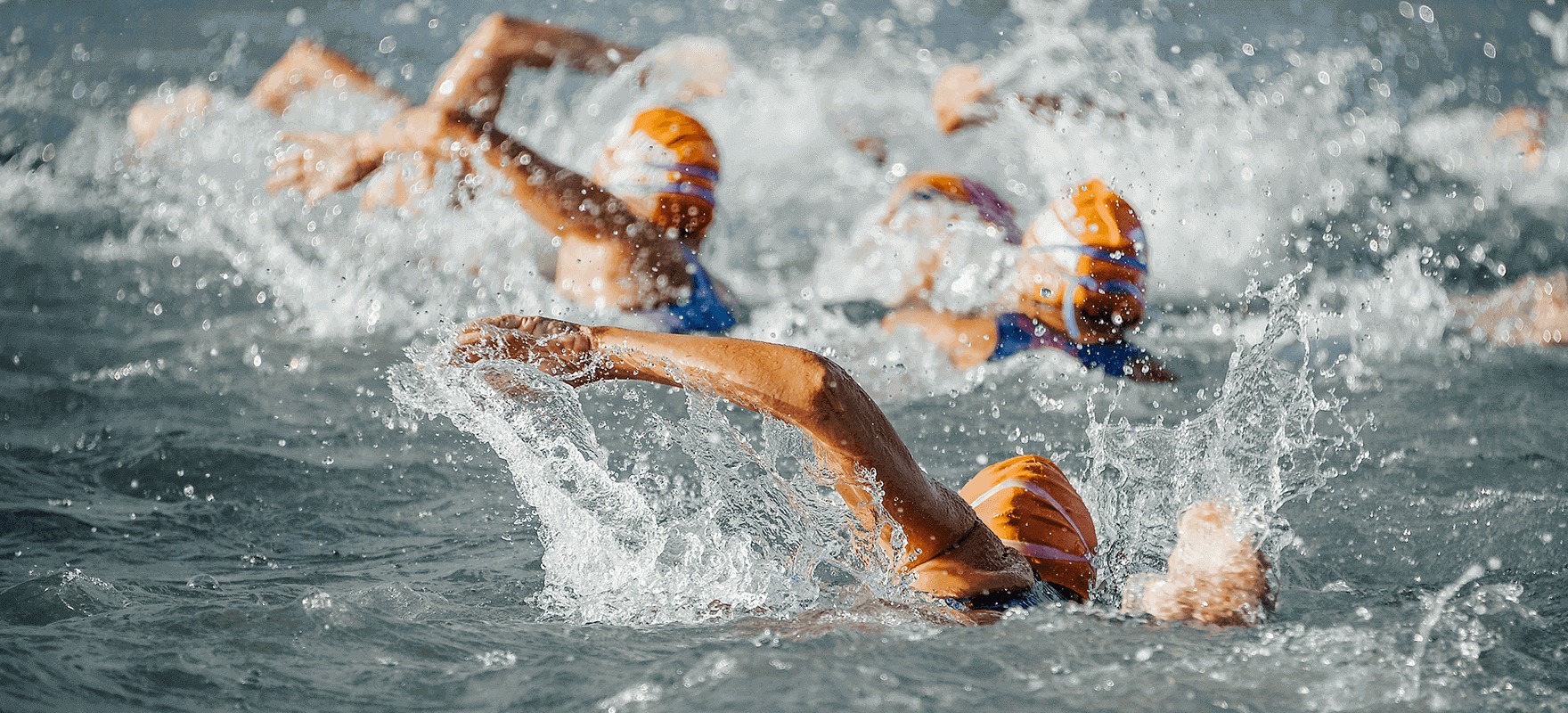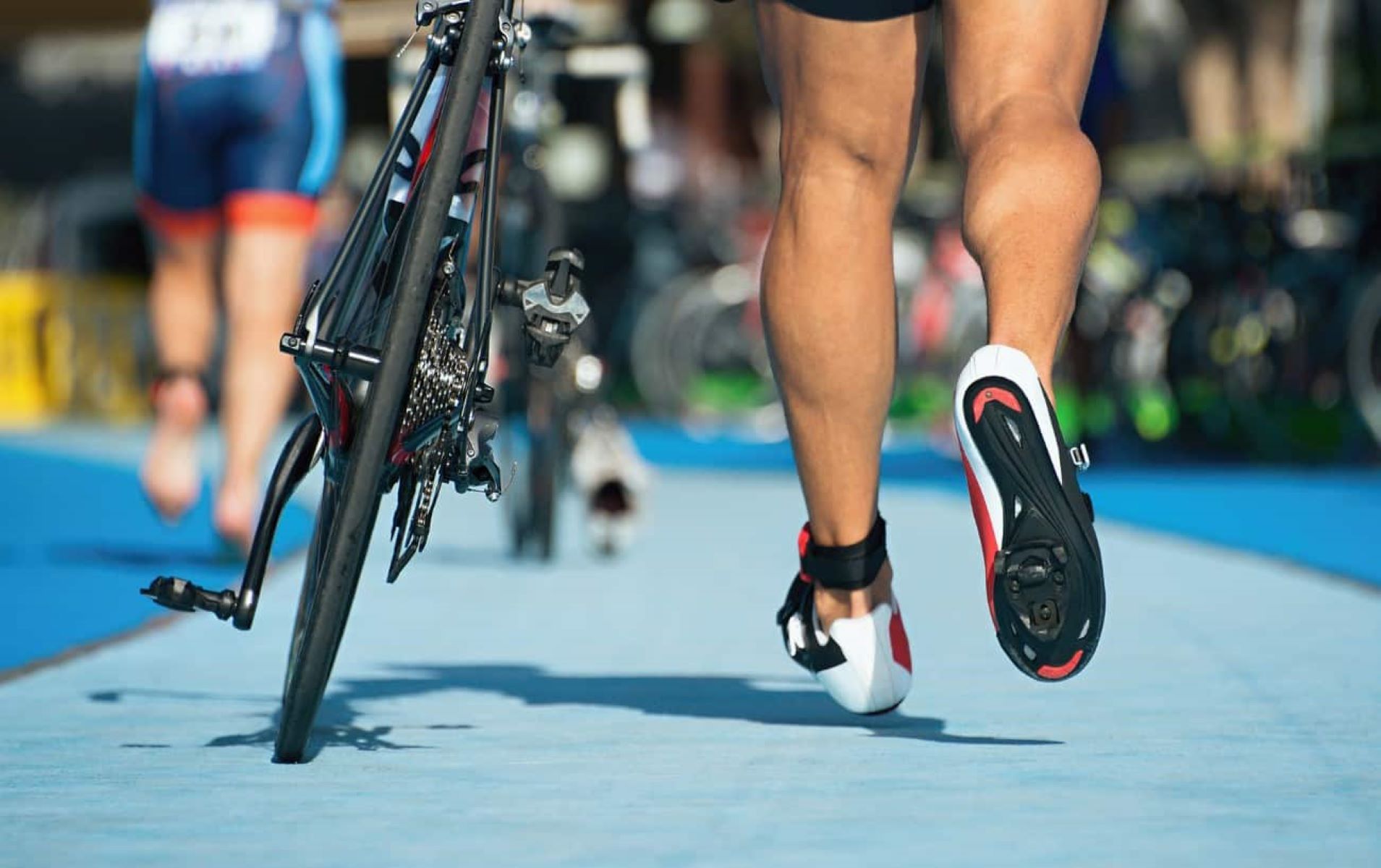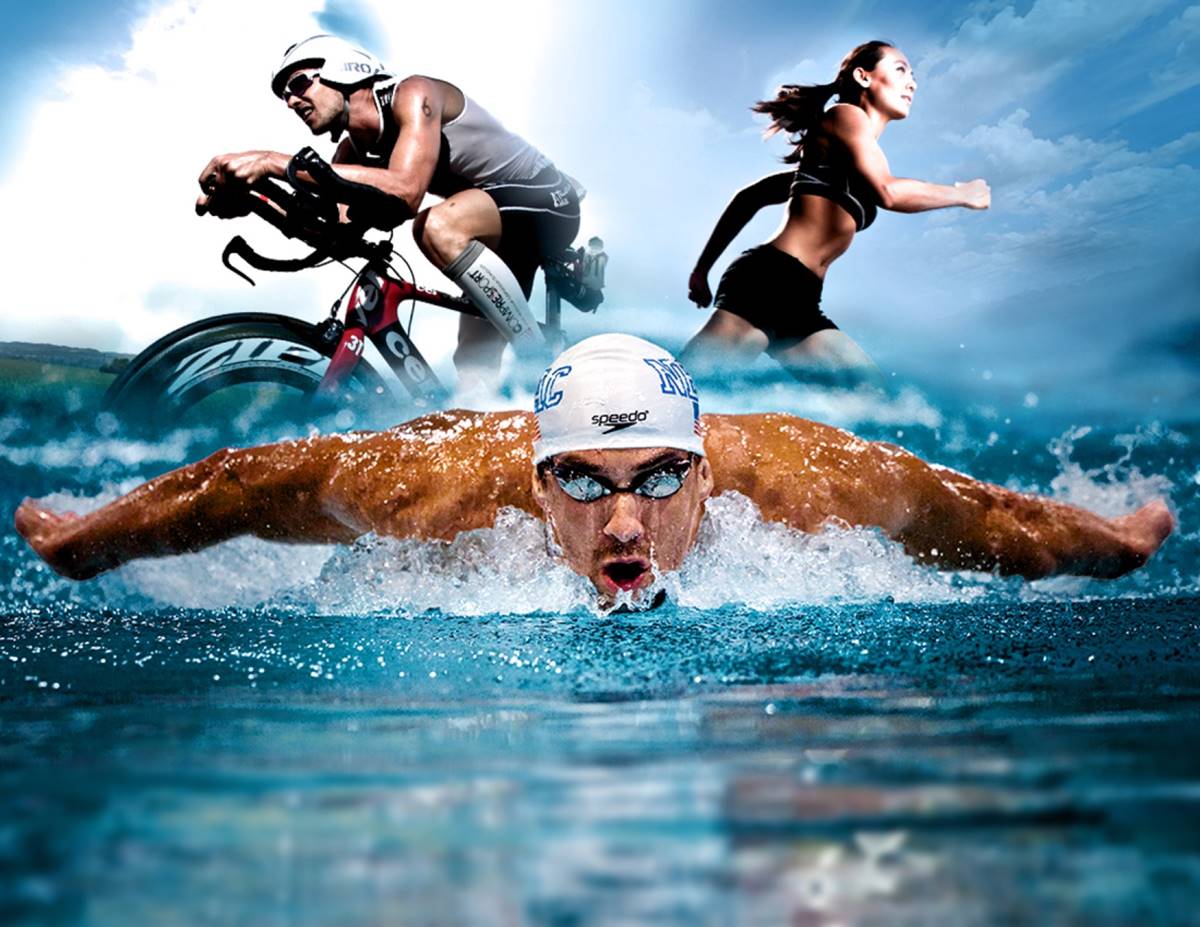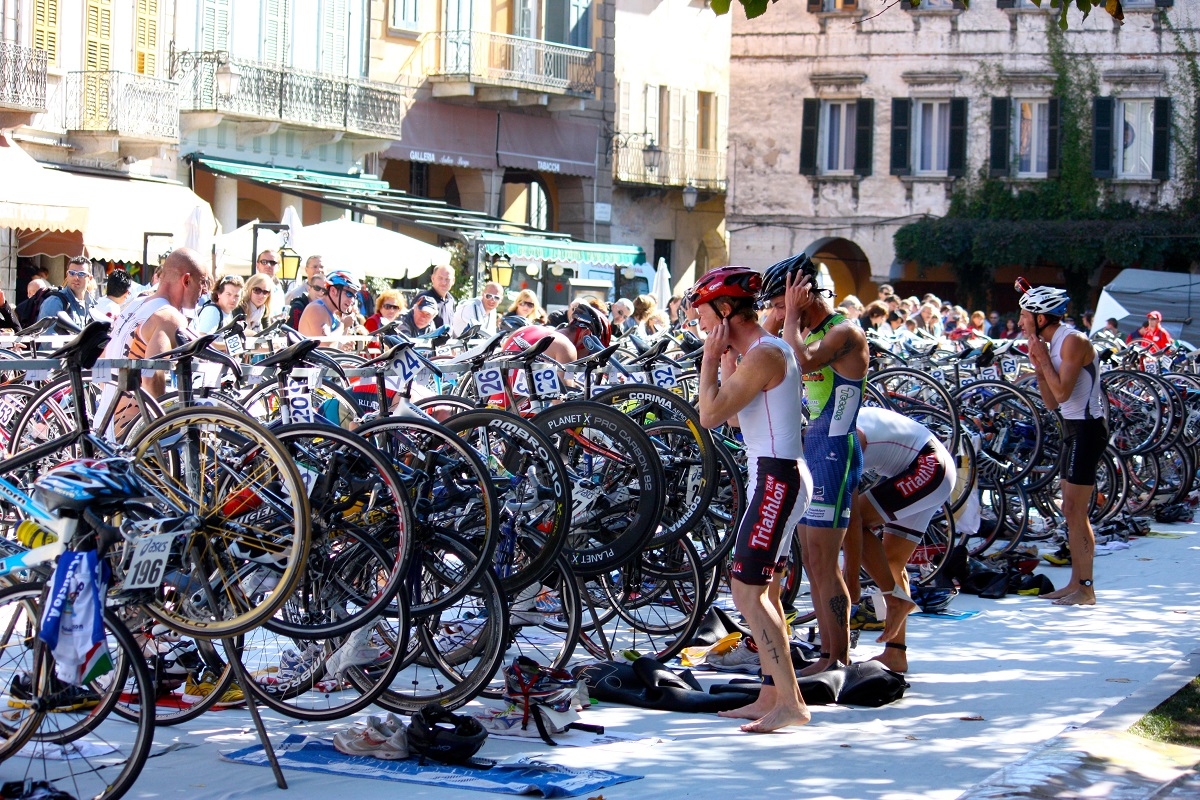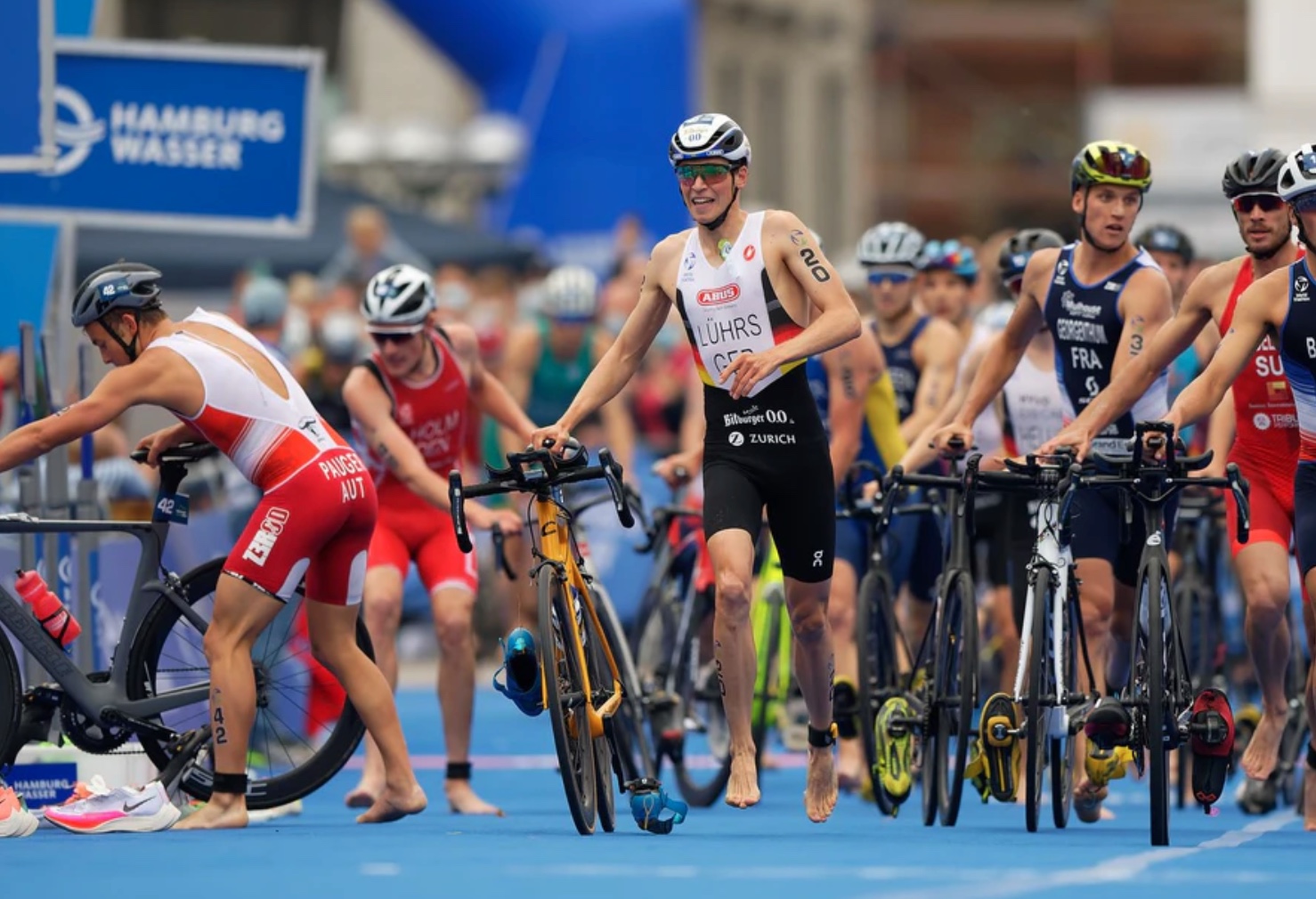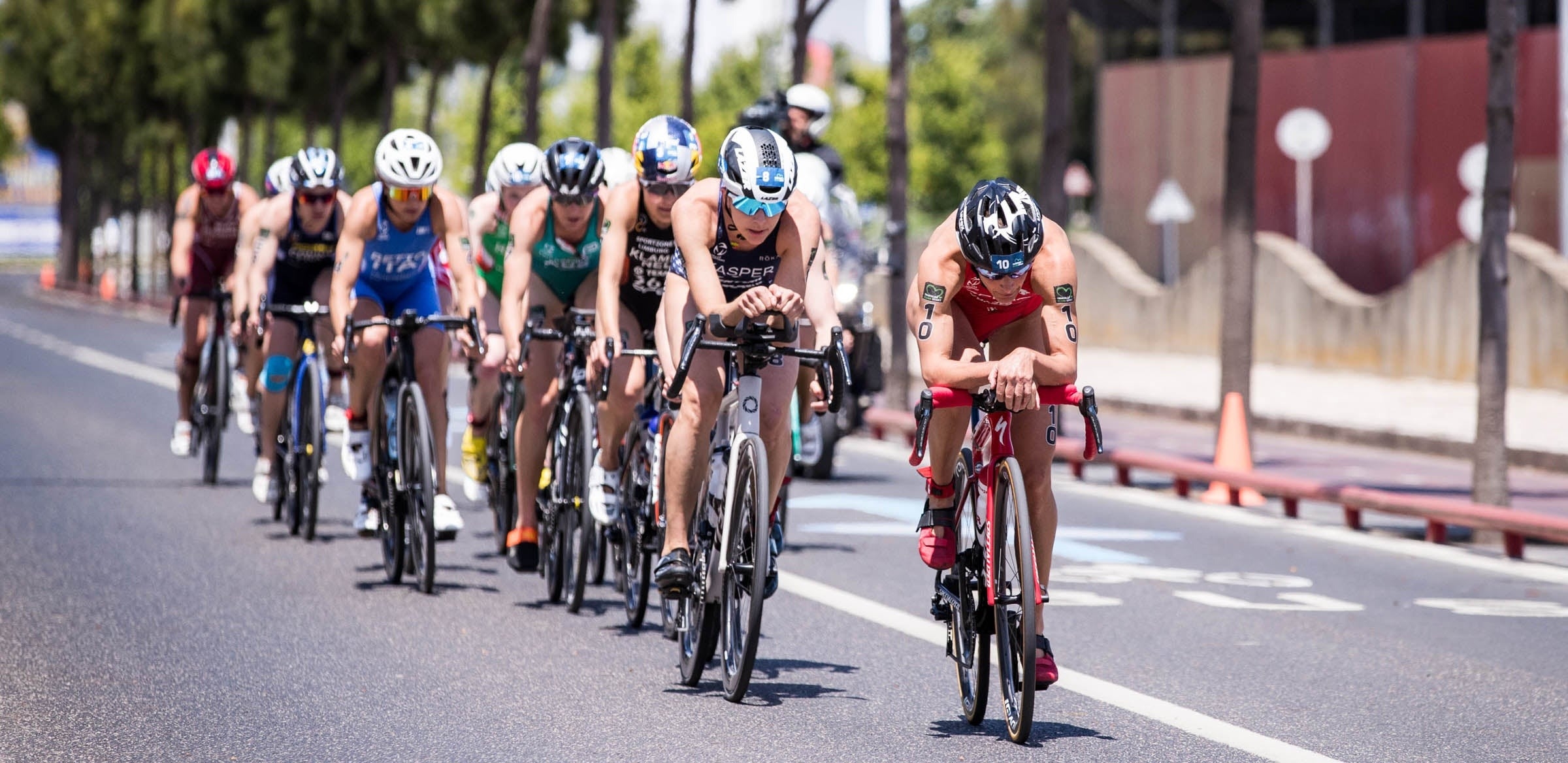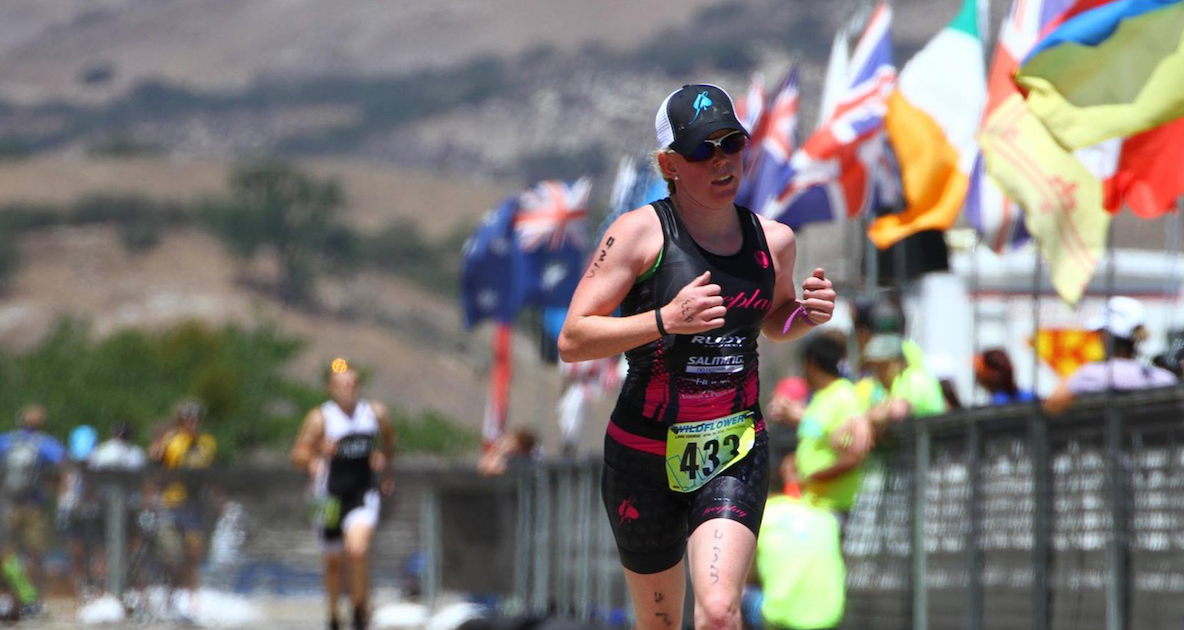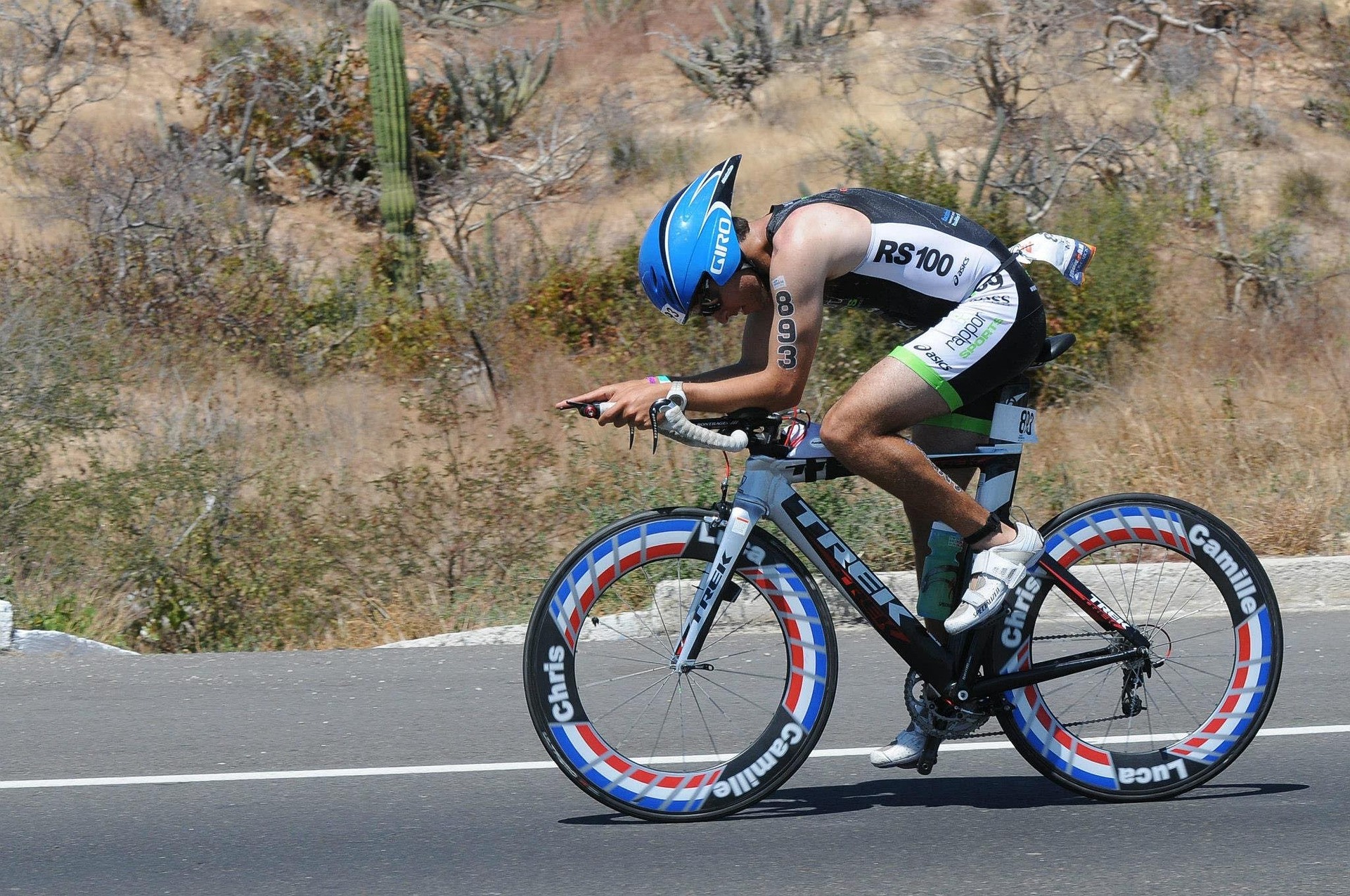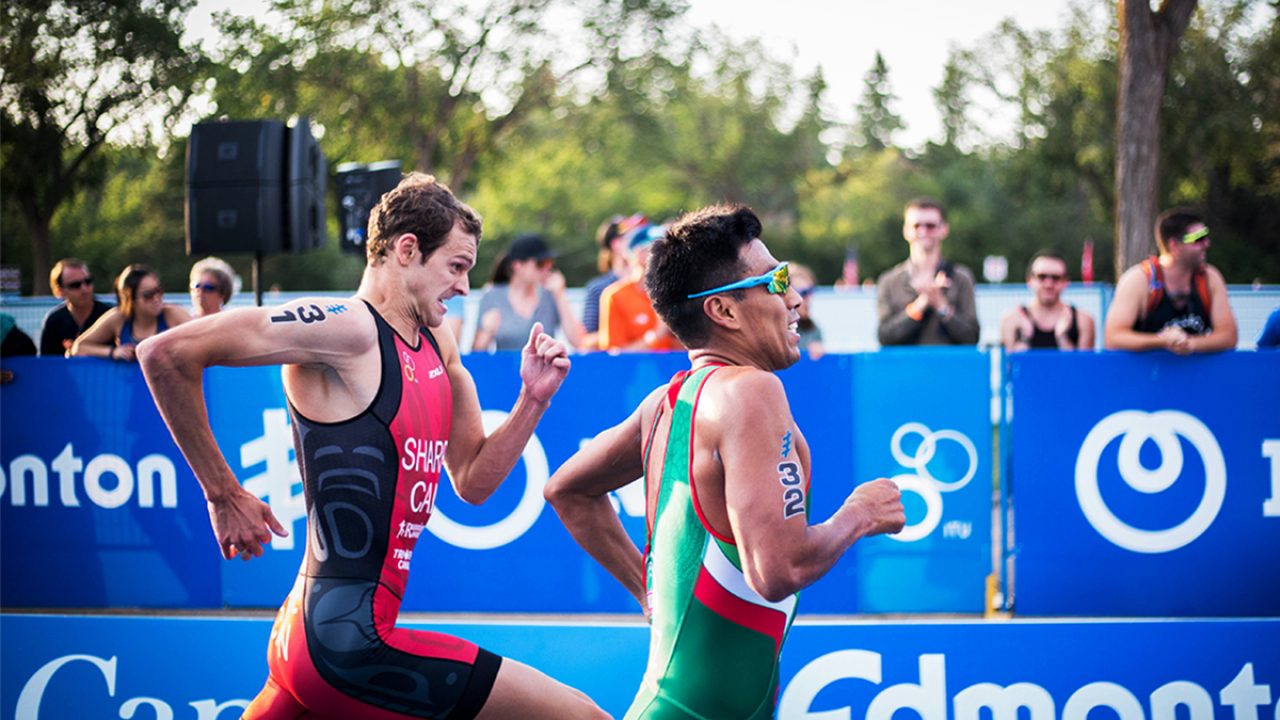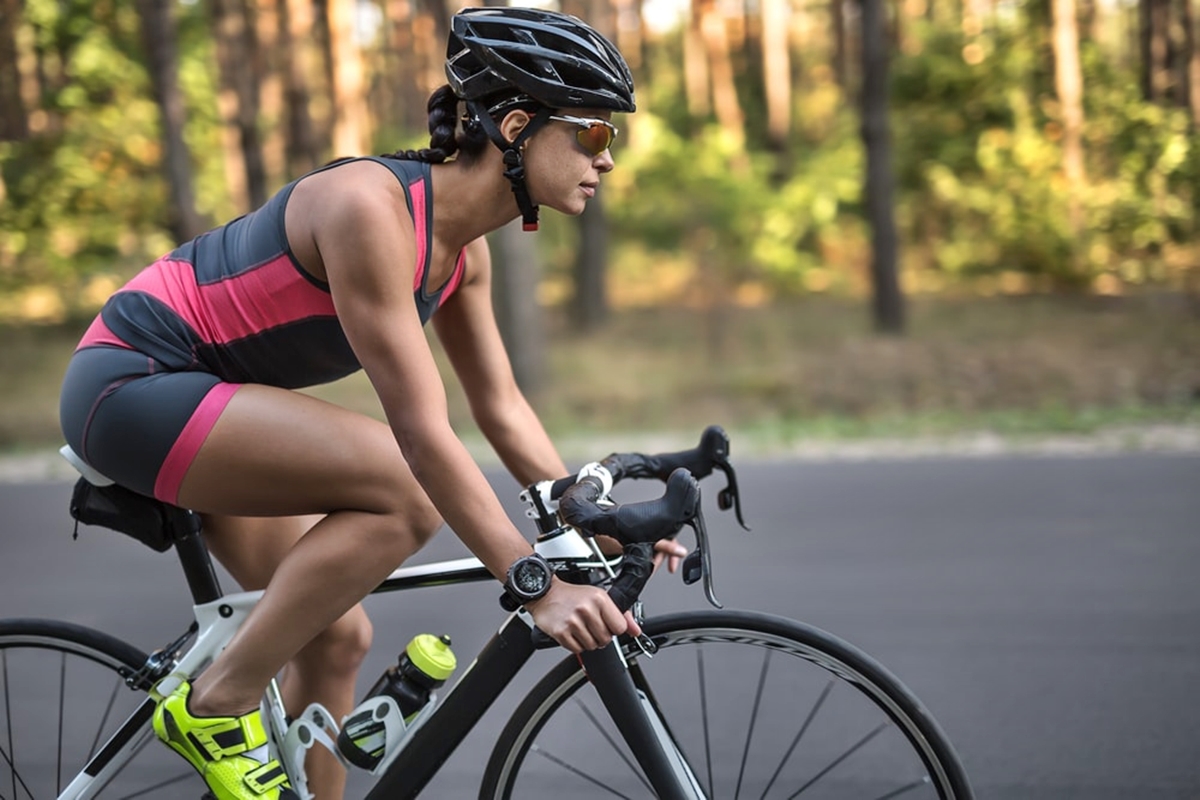

Featured
What To Wear For Sprint Triathlon
Modified: August 22, 2023
Looking for the perfect outfit for your sprint triathlon? Discover our featured collection of athletic wear designed to optimize performance and ensure maximum comfort on race day.
Introduction
A sprint triathlon is an exhilarating test of athleticism and endurance. It consists of three disciplines – swimming, cycling, and running – all rolled into one exciting event. While training and preparation are crucial for success, choosing the right attire is equally important.
Participating in a sprint triathlon requires a specific set of clothing and accessories that allow for movement, comfort, and performance. The right attire not only enhances your performance but also ensures your safety and reduces the risk of injury. From the proper swimwear to the ideal running apparel, every aspect of your outfit plays a role in your overall experience.
In this article, we will delve into the significant role clothing and accessories play in a sprint triathlon. We will discuss the importance of choosing the right attire for each discipline, including swimming, cycling, and running. Additionally, we will explore the essential accessories that can further enhance your performance and make the overall experience more enjoyable.
By gaining a deeper understanding of the importance of proper attire and accessories, you will be able to make informed choices that can give you a competitive edge in your next sprint triathlon and help you achieve your personal best.
Importance of Proper Attire in a Sprint Triathlon
When it comes to participating in a sprint triathlon, the right attire can make all the difference in your performance and overall experience. Proper attire not only ensures comfort and mobility but also plays a vital role in reducing the risk of injury. Let’s delve into why choosing the right clothing is essential for each discipline of the sprint triathlon.
Swimming: The swim leg of a sprint triathlon requires a specific type of swimwear that allows for seamless movement in the water. Opting for a well-fitted, streamlined swimsuit or trunks is crucial in order to minimize resistance and maximize efficiency. Avoid loose-fitting swimwear that can slow you down and lead to drag in the water.
Cycling: The cycling leg of a sprint triathlon demands attire that provides both comfort and aerodynamics. Choosing padded cycling shorts or bibs can help alleviate discomfort and prevent chafing during long rides. Additionally, wearing a moisture-wicking jersey helps to keep you cool and dry as you power through the bike course.
Running: As the final discipline of a sprint triathlon, the running leg requires lightweight and breathable apparel that allows for unrestricted movement. Opt for moisture-wicking shorts or leggings and a well-fitted, breathable top. Proper running shoes are crucial to prevent injuries and provide optimal support and cushioning.
Aside from the specific attire for each discipline, it’s important to consider the transition periods between each leg of the race. Quick-drying and easily removable clothing can save you precious seconds during transitions. Consider using triathlon-specific gear, which often features soft, quick-drying materials that can be worn comfortably throughout the entire race.
In addition to the clothing, accessories also play a crucial role in a sprint triathlon. A well-fitted swim cap and goggles are essential for the swim leg to improve visibility and reduce water resistance. Transition bags can help keep your gear organized and make transitioning between disciplines more seamless.
Overall, taking the time to carefully select the proper attire and accessories for each discipline of a sprint triathlon is vital. The right clothing and gear not only improve your performance but also contribute to your safety and comfort throughout the race. By ensuring that you are well-prepared in terms of attire, you can focus on giving your best performance and achieving your sprint triathlon goals.
Choosing the Right Swimwear
When it comes to the swim leg of a sprint triathlon, having the right swimwear is essential. The right choice of swimwear not only ensures comfort and ease of movement but also improves efficiency in the water. Here are some key factors to consider when selecting swimwear for a sprint triathlon.
Fit: Opting for a well-fitted swimsuit or trunks is crucial. A snug and secure fit reduces drag in the water, allowing for better mobility and faster swim times. Avoid swimwear that is too loose or baggy, as it can create unnecessary resistance in the water.
Material: Look for swimwear made from high-quality materials that are both durable and quick-drying. Performance-enhancing fabrics, such as polyester or nylon blends, are ideal for their ability to reduce drag and ensure maximum comfort in the water.
Style: Consider the style of swimwear that suits your personal preference and needs. Traditional one-piece swimsuits and swim trunks are popular choices for their versatility and coverage. For those looking for increased freedom of movement, consider options such as swim briefs or swim jammers.
Additional Features: Some swimwear options come with added features that can enhance your swimming experience. Look for swimwear with built-in support, such as a supportive bra or compression panels, to provide added comfort and stability during the swim leg.
Goggles and swim caps: In addition to swimwear, goggles and swim caps are crucial accessories for a sprint triathlon. Goggles protect your eyes and improve underwater visibility, allowing you to swim with confidence. Choose goggles that provide a comfortable fit and maintain a watertight seal. Additionally, a swim cap helps improve streamline and reduce drag in the water.
Remember to try on different swimwear options and test them out during swim training sessions to ensure the right fit and comfort. Selecting the ideal swimwear for a sprint triathlon is essential to enhance your swimming performance and overall race experience. Investing in quality swimwear that supports your mobility and reduces water resistance will give you the competitive edge you need to excel in the water.
Selecting the Ideal Cycling Gear
When it comes to the cycling leg of a sprint triathlon, having the right gear can significantly improve your performance and comfort. Proper cycling attire not only enhances aerodynamics but also reduces friction and discomfort during long rides. Here are key considerations for selecting the ideal cycling gear for a sprint triathlon.
Cycling Shorts or Bibs: Padded cycling shorts or bibs are a vital component of cycling attire. The padding, also known as a chamois, provides cushioning and helps prevent chafing and saddle sores during longer rides. Opt for shorts or bibs that have a snug fit and are made from moisture-wicking and breathable materials.
Cycling Jersey: A cycling jersey is designed to provide breathability and moisture management during the ride. Look for jerseys made from lightweight, moisture-wicking fabrics that allow for optimal airflow. Consider options with a full or half zipper for easy temperature regulation during the race.
Cycling Shoes: Proper cycling shoes are essential to optimize power transfer and pedal efficiency. Select cycling shoes that fit properly and provide good support and comfort. They should have a stiff sole to prevent energy loss and allow for maximum power transfer to the pedals.
Cycling Socks: While often overlooked, cycling socks play a role in comfort and blister prevention. Choose socks that are moisture-wicking, breathable, and provide a snug fit. Look for padded areas around the heel and toe for added cushioning during the ride.
Helmet: The most critical piece of safety gear for a cyclist is a well-fitting and certified helmet. Ensure the helmet meets safety standards and adjusts properly to provide a secure and comfortable fit. Remember to always wear your helmet during the bike leg of the triathlon for your safety.
It’s important to note that practicing in the gear you plan to wear during the race is crucial. This allows you to ensure proper fit and comfort during different cycling positions and distances. Take the time to test out your gear during training rides to make any necessary adjustments.
By carefully selecting the ideal cycling gear for your sprint triathlon, you’ll enhance your performance, comfort, and overall race experience. Investing in high-quality gear that supports your cycling needs will help you gain speed, efficiency, and confidence on the bike leg of the triathlon.
Optimal Running Apparel
When it comes to the running leg of a sprint triathlon, having the right apparel is crucial for comfort, performance, and injury prevention. The right running attire should allow for a full range of motion, provide moisture-wicking properties, and offer the necessary support. Here are key considerations for selecting optimal running apparel for a sprint triathlon.
Running Shorts or Leggings: Choose running shorts or leggings that are made from lightweight, breathable, and moisture-wicking materials. Look for options with built-in compression or supportive liners to ensure comfort and prevent chafing. Consider the length and fit that suits your preference and the race conditions.
Running Tops: Opt for lightweight, moisture-wicking tops that allow for optimal airflow during the run. Look for options with ventilation panels or mesh inserts to enhance breathability. Ensure that the top fits well and does not cause any discomfort or restriction of movement.
Running Shoes: Proper running shoes are a critical component of running gear. Invest in a pair of running shoes that are specifically designed for your running style, foot type, and the distance of the race. Get properly fitted at a specialty running store to ensure the right support, cushioning, and fit.
Compression Gear: Compression socks or sleeves can provide additional support to the calf muscles and improve blood circulation during the run. These can aid in reducing muscle fatigue and minimizing the risk of cramps. Consider compression gear if you have a history of calf issues or prefer the added support.
Visibility Accessories: If your triathlon takes place in low-light conditions, consider wearing reflective gear or using clip-on LED lights to enhance your visibility to other athletes and spectators.
It is important to train in the apparel and gear that you plan to wear during the race. This will help you identify any discomfort, chafing, or fit issues and allow you to make necessary adjustments before race day.
By selecting the optimal running apparel for your sprint triathlon, you’ll ensure maximum comfort, performance, and injury prevention during the run leg. Not only will appropriate running attire enhance your overall race experience, but it will also contribute to your confidence and enjoyment as you cross the finish line.
Essential Accessories for a Sprint Triathlon
In addition to the right clothing for each discipline, there are several essential accessories that can enhance your performance and make your sprint triathlon experience smoother and more enjoyable. These accessories play a crucial role in ensuring your safety, comfort, and convenience throughout the race. Let’s take a look at some must-have accessories for a sprint triathlon.
Transition Bag: A transition bag is a handy accessory that helps you keep your gear organized and easily accessible during transition periods. Look for a bag with designated compartments for your swimwear, cycling gear, running shoes, and other essential items. This will help streamline your preparations and save time during race transitions.
Timing Device: A reliable timing device, such as a sports watch or a GPS watch, is essential for tracking your performance and pacing during the race. It allows you to monitor your time, distance, and speed, helping you stay on target with your goals and strategies.
Nutrition and Hydration: Proper fueling and hydration are crucial during a sprint triathlon. Consider using a fuel belt or hydration pack that allows you to conveniently carry water, sports drinks, and energy gels. Look for options that provide easy access to hydration and nutrition without interfering with your movement.
Sunglasses: Sunglasses are not only a style statement but also protect your eyes from the sun’s harmful UV rays, wind, dust, and debris. Opt for sunglasses with UV protection and a comfortable fit that doesn’t slide or bounce during movement.
Race Belt: A race belt is a simple accessory that allows you to attach your race number to your body without the need for safety pins. This eliminates the risk of pricking yourself and makes it easier to transition between disciplines without damaging your clothing.
Body Glide or Anti-Chafing Balm: To prevent chafing and discomfort during the race, consider applying a body glide or anti-chafing balm to areas prone to friction, such as underarms, thighs, and around the neckline. This will help reduce the risk of chafing and prevent irritation.
Spare Tubes and Tire Repair Kit: If you’re participating in a triathlon with a bike leg, it’s essential to carry spare tubes, tire levers, and a tire repair kit. This will ensure you are prepared in case of any punctures or tire damage during the race.
Remember, practice using these accessories during your training sessions to ensure you are familiar with their functionality and placement. This will help you utilize them more efficiently and ensure a seamless race experience.
By utilizing these essential accessories during your sprint triathlon, you’ll have the necessary support, comfort, and convenience to perform at your best. These accessories can make a significant difference in your overall race experience, helping you stay focused on the course and reach your goals.
Conclusion
Participating in a sprint triathlon is a thrilling and challenging endeavor. As we have explored in this article, choosing the right attire and accessories is essential for optimal performance, comfort, and safety during each discipline of the race.
From selecting the appropriate swimwear that reduces drag in the water to choosing cycling gear that enhances aerodynamics and prevents discomfort, every aspect of your attire has a significant impact on your performance. Additionally, opting for running apparel that allows for a full range of motion and provides moisture-wicking properties ensures comfort on the final leg of the race.
Beyond clothing, essential accessories such as transition bags, timing devices, and hydration systems contribute to a well-organized and efficient race experience. These accessories streamline your preparations and help you stay fueled and hydrated throughout the race.
Remember, proper training and practice in your chosen attire and using the accessories are crucial to ensure a seamless race day. Testing your gear during training sessions allows you to make any necessary adjustments and ensure that you are comfortable and confident in your choices.
By carefully selecting the ideal attire and accessories for each discipline, you can maximize your performance, prevent injuries, and enjoy a more fulfilling sprint triathlon experience. So, invest in quality gear, choose the right clothing, and don’t forget those essential accessories to help you achieve your goals and cross that finish line with pride!
